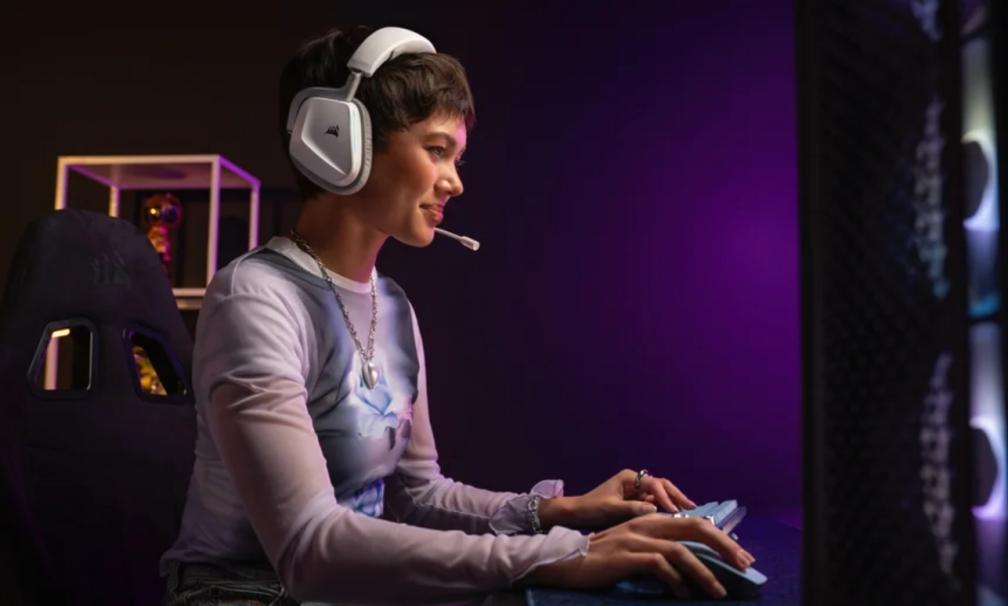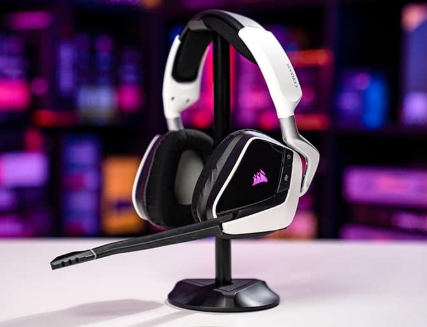Getting your Corsair headset working perfectly with your PS5 means more than just plugging it in. You’ll need to configure both audio and microphone settings to enjoy full sound immersion and clear chat communication. Whether you're using a wireless or wired Corsair model, this guide walks you through every essential step. From output selection to 3D audio tuning, we’ll help you set up everything for an optimized experience. Let’s dive into connecting your Corsair headset and fine-tuning your audio preferences.

Basic Audio Setup After Connecting Your Headset
Once the Corsair headset is physically connected, start configuring your PS5’s basic sound settings to ensure output is routed correctly.
Select Output Device in PS5 Sound Settings
Navigate to Settings > Sound > Audio Output. Under “Output Device,” select your Corsair headset, which may appear as “USB Headset” or the model name. If it’s a wireless version, ensure the USB dongle is inserted. Once selected, the PS5 will route all sound to your headset. This step is critical for getting both game audio and voice chat working. Always double-check that the correct device is active, especially if you switch between multiple headsets or audio devices.
Set Output to Headphones as “All Audio” or “Chat Audio”
Still within the Audio Output menu, scroll to “Output to Headphones.” Here, choose between “All Audio” and “Chat Audio.” Selecting “All Audio” sends game sounds, music, and chat through the headset, offering full immersion. “Chat Audio” sends only voice chat, keeping game sound on your TV. For most gamers, “All Audio” is the better option. Make this selection based on your gaming setup and whether you're playing solo, streaming, or sharing audio with others in the room.
Adjust Volume and Balance Sliders
Next, adjust the “Headphones Volume” and, if available, the “Chat/Voice Balance.” This lets you raise or lower the overall sound and choose how much emphasis to place on chat vs. game audio. Access this via Control Center > Sound > Headphones for quick in-game tweaks. Use the balance slider to prioritize your teammates’ voices during competitive play or lean into immersive game audio during solo sessions. Test different levels while playing to find the sweet spot that works best.
Configure Microphone Input for Corsair Headset
After the headset’s audio output is working, you’ll want to confirm the mic is properly set up for voice chat.
Choose the Correct Input Device from the Mic Settings
Go to Settings > Sound > Microphone and select “Input Device.” From the dropdown, choose your Corsair headset—usually labeled “USB Headset” or its specific model. If it’s not selected, your PS5 may default to the DualSense controller’s built-in mic. Setting the correct input ensures your voice is picked up clearly and avoids unexpected mic changes mid-game. Confirm the headset mic is detected before joining any voice chats or online multiplayer matches.
Adjust Mic Level and Test Input Volume
Once the input device is selected, choose “Adjust Microphone Level.” Speak into your mic at normal volume and watch the on-screen meter. You’ll want the level to hover near the center without maxing out, which causes distortion. Adjust the slider accordingly until you get clean, crisp input. If teammates complain about low or loud mic volume, revisit this screen and retest. This step ensures your commands or conversation come through clearly during gameplay.
Disable Controller Mic to Avoid Conflict
To prevent audio issues, disable the DualSense controller’s built-in mic. Press the microphone mute button on the controller until it shows a solid orange light or go to Settings > Sound > Microphone > Mute Microphone. This avoids any unintended noise from being picked up and ensures your Corsair headset is the sole input device. Leaving both mics enabled can cause echo, distortion, or conflicting signals, disrupting your gaming experience and team communication.
Enable and Adjust 3D Audio on PS5
Activating and tuning 3D audio can boost spatial awareness and immersion during gameplay.
Turn On 3D Audio for Headphones in Sound Settings
To enable this feature, go to Settings > Sound > Audio Output and scroll to the 3D Audio for Headphones section. Toggle it On to activate Sony’s Tempest 3D AudioTech. This technology simulates spatial sound to help you pinpoint enemy footsteps or environmental cues in supported games. After activation, you’ll notice richer and more directional soundscapes. Ensure your Corsair headset supports stereo output for the best 3D audio results.

Select Preferred 3D Audio Profile Based on Ear Test
After enabling 3D Audio, you’ll be prompted to customize the profile. Select “Adjust 3D Audio Profile” and follow the ear-level sound test. The system will play tones at different levels to help you choose the one that feels most natural. Pick the profile where sounds feel most immersive and centered. This test helps optimize your experience by tailoring audio based on your ear shape and perception, enhancing realism in supported games like shooters and RPGs.
Know When to Disable 3D Audio for Game Balance
While 3D Audio improves immersion, some players prefer it turned off for competitive reasons. In games with precise sound placement or fast-paced action, the simulated spatial audio might feel less accurate than standard stereo. If footsteps or sound cues seem misaligned, try disabling 3D Audio and compare performance. You can toggle it off anytime in settings. Testing both modes in different game genres will help you decide when 3D Audio enhances gameplay and when it’s better left off.
Fine-Tune EQ and Surround Effects
For even more personalized sound, explore equalizer (EQ) settings and surround effects where available.
Use In-Game Audio Settings for Sound Customization
Many PS5 games include in-game audio settings, offering sliders for bass, treble, and voice clarity. Some let you toggle “cinematic” or “competitive” audio modes. Use these to fine-tune how your Corsair headset delivers game audio. For instance, boosting footsteps or reducing background music can give you an edge in shooters. Access these options in each game’s settings menu, and experiment until you find the ideal mix. Game-specific tuning can greatly enhance clarity and immersion.
Enable EQ via Corsair iCUE (on PC) for Some Headsets
If your Corsair headset supports iCUE, connect it to a PC and open the software. Within iCUE, go to the EQ tab and create a custom audio profile with your preferred bass, mid, and treble levels. Save it to the headset’s onboard memory if supported. Once saved, you can use the EQ profile on your PS5 without needing the software. This is especially useful for fine-tuning audio for different genres or balancing sound for streaming.
Save Preferred Audio Profiles Where Supported
Certain Corsair models support onboard profile saving, allowing you to store EQ and sound settings directly on the headset. This feature is configured via iCUE on PC. Once saved, the headset remembers your preferences when connected to PS5. You won’t need to reconfigure settings every time. Use this to switch between profiles—like one for immersive single-player and another for competitive multiplayer. Check your headset manual to confirm if it supports onboard storage and how to activate it.
Conclusion
Learning How to Connect Corsair Headset to PS5 is simple, but optimizing the experience takes a few extra steps. From selecting the right output and mic settings to fine-tuning 3D audio and EQ, these adjustments can make a big difference. Whether you’re diving into single-player adventures or high-stakes multiplayer matches, your sound setup matters. Take time to test and refine each setting. Once configured properly, your Corsair headset delivers immersive, clear, and powerful audio every session.
FAQ
Check your PS5's headphone volume slider in the Control Center and make sure it’s not muted or set too low. Also, verify your headset’s onboard volume controls and that the correct output device is selected in settings.
Only Corsair headsets with onboard memory can retain EQ profiles from iCUE. Set the EQ on PC, save the profile to the headset, then use it on PS5. If your model lacks onboard storage, you won’t be able to use custom EQ without a PC.
Make sure only one mic is active—disable the DualSense mic. Lower your mic level in PS5 settings and ensure your headset’s mic isn’t too close to your mouth. Also, avoid high game volume spilling into the mic, which can cause echo.

